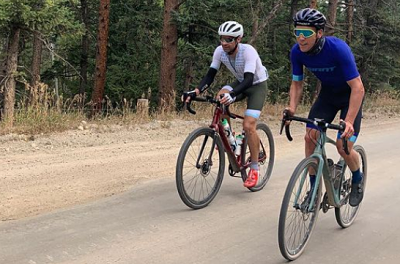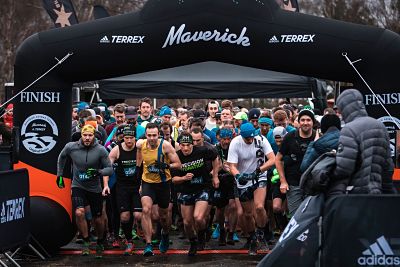For athletes, fueling your hardest training sessions and races is a major piece of the performance puzzle. But sometimes the pieces just don’t seem to fit together, and if this happens it can be troublesome.
Recognising the common mistakes in your fueling plan ahead of time can help to make the puzzle easier to solve and thankfully most of these errors are easy enough to remedy...
Not enough carb
Not taking enough carbohydrate is the number one fueling mistake on the list for good reason. It’s the most common issue we see when working on individual fueling plans with endurance athletes.
The most fundamental part of your fueling strategy is making sure you’re getting enough carbohydrates in to adequately support your rate of energy expenditure.
When you’re performing exercise of moderate-to-high intensity for a duration of longer than ~90 minutes, you’ll need to consume carbohydrates to maintain optimal performance because your internal stores of glycogen, which up to that point predominantly fuel exercise, will start running low and this leads to a reduction in your pace.
Andy has previously described the concept of the ‘Three Levers Model’ which refers to the trifecta of acute costs of endurance exercise that need to be replaced in order to maintain performance during prolonged endurance activities:
- Carbs
- Fluids (i.e. sweat)
- Electrolytes (most importantly, sodium)
Andy highlights why giving yourself the ability to ‘pull’ on each lever as and when required, independent of the other two, may be beneficial to performance.
When thinking solely about the ‘carb’ lever, failure to ingest quite enough or waiting too long to fuel during long and/or high-intensity exercise will usually manifest as a drop-off in performance.
At the more extreme end of the spectrum, seriously under-fueling during endurance activities runs the risk of ‘bonking’.
‘Bonking’, sometimes referred to as ‘hitting the wall’, is witnessed as a rapid and dramatic drop-off in performance when glycogen stores are unable to meet the demands of working muscles or to maintain blood glucose levels. It’s the body slamming the brakes on to slow you down and it can be pretty much ‘Game Over’ if it happens in a race.
If it happens during training sessions it can compromise not only the workout concerned but up to two days of subsequent training. This is because it can take 24 hours or more to adequately restock fully depleted muscle glycogen stores, and therefore the duration and intensity of sessions are limited during that time period.
How to fix it: Understanding your carb requirement in terms of grams per hour is the starting point of any good fueling strategy and if you’re unsure about your numbers, consider working those out before going any further.
Too much carbs
Just as too little fuel can be disadvantageous, too much carbohydrate can also be detrimental to your performance, primarily because of the gastrointestinal (GI) distress a sugar overdose can cause.
Overdoing the carbs can happen for a number of reasons. Examples include:
- Having very ambitious fueling goals in a bid to ‘eek’ out every drop of performance
- Pre-race nerves and anxiety lowering the threshold of what your gut normally finds ‘tolerable’
- And perhaps most common of all, mixing carb-rich drink mixes with other fuel sources like gels (i.e. not using separate ‘levers’ for your carbs, fluids and electrolytes).
Isotonic carb drinks can be an effective way for you to meet some or all of your carbohydrate (and hydration/sodium) needs in the right scenarios. Your average energy drink delivers a small-to-moderate amount of everything - carbs, sodium, and of course, fluid.
They can be a perfect choice in shorter duration events (up to ~2 hours), or when hydration requirements aren’t as high, perhaps due to cooler conditions and lower total sweat losses. They’re also super useful when only liquid calories can easily be ingested if you’re breathing hard.
However, in longer duration events (>2 hours), isotonic drinks alone are unlikely to meet your carb, fluid and electrolyte replacement needs in exactly the right ratio. In the heat especially, this can lead to overconsuming the energy drink mix when trying to quench thirst, inadvertently delivering too much carbohydrate.
This issue of taking on too much carbs through your drinks is then exacerbated if you’re also using gels, chews, or bars to help meet your perceived fueling needs. Such an approach can easily overwhelm the gut and lead to serious GI distress.
Depending on the consistency, a concentrated gel or chew may require a drink to wash it down (i.e. ‘water’ it down) to aid absorption, something that a concentrated carb drink mix is not best suited to doing.
How to fix it: Again, knowing your numbers is important. And keeping your fluids for hydration and your ‘solids’ for nutrition can be a good idea.
This can be achieved by using hypotonic drinks containing more electrolytes or plain water with electrolyte capsules for hydration. And by using gels, chews, bars or other more solid sources of carbohydrate to meet your energy needs.

Follow an inflexible plan
We’re big believers that you should have some form of a plan when it comes to your fueling and hydration and that that plan should be based on your individual needs.
That said, if you try to stick too closely to a pre-planned fueling strategy (or hydration plan for that matter) you might end up overriding or choosing to ignore important bodily signals, like what your body actually needs or wants at a given time. The goal, and the route to the best outcome, is to build a framework fueling plan that you aim to work within, whilst at the same time using instinct, feel and experience to adjust that plan ‘on the fly’ during exercise.
How to fix it: Building your fueling strategy comes from a mixture of objective analysis (understanding your likely carbs per hour intake) and a good deal of trial and error.
It can be a painstaking process to find what works best for you (you have to be prepared to get it wrong a few times) but it’s more than worth the time when you take into account the pay-offs that a good, flexible fueling strategy can have on race day.
Don’t have a plan
There are some things in life that you can make up as you go along but your race day fueling strategy isn’t one of them, especially if your race day consists of a long or hot event and your goal is optimal performance.
The phrase ‘fail to prepare, prepare to fail’ is apt.
Whilst number three on our list - an inflexible plan - highlights the risks of rigidly sticking to a fueling plan no matter how your body reacts to it on the day, it’s arguably riskier going into a big event with no plan at all.
The main pitfall of this tends to be inadequate fueling early on because adrenaline and other ‘fight or flight’ hormones mask your effort levels and kill hunger pangs. This leads to a bonk or general dip in performance later on in the event when the true cost of your early exertions make itself known.
How to fix it: Prepare. Trial your fueling plan in some key sessions and/or smaller races. It’s important to keep notes and compare what you consumed with how you felt. Over time you’ll develop the experience to know what works and what doesn’t.
When race day comes, make sure the parameters of the plan are cemented in your mind and that you have all of the fuel (and hydration) products you need to execute it properly. Of course, you’re likely to make some small deviations from the plan based on how you feel as the event progresses, but these will usually be small amends if your plan is properly tried and tested.

Fail to train your gut
Some people like surprises. Your gut doesn’t. Especially on race day.
If you plan on consuming carbohydrates and/or a substantial amount of fluids during races or long training sessions, then training your gut is an important, but often underestimated, step to include.
To leave it all to chance and not give your gut time to adapt to a greater carbohydrate load (which some athletes attempt to do during racing), risks GI distress like bloating, sickness and diarrhoea. This not only hinders performance but can often be severe enough to cause a DNF.
The good news is that the gut is highly adaptable, not just to the volume of food or fluid it’s fed but the actual types of foods too. Training it can help raise the ceiling on what you find tolerable so you can deliver more carbs and fluids to your body when it needs them most of all.
This concept doesn’t come naturally to many athletes whose instinct may be to fuel sparingly in training to aid weight loss or so that they can somehow magically benefit from having more carbs available on race day when they eat more.
However, gut training is a common trait in the elite and successful athletes that we work with as they fuel aggressively in key training sessions (especially in the immediate build up to races) so that physiologically and psychologically they’re ready to do the same on race day.
How to fix it: From practitioners in the field, it seems the consensus is that training your gut can be achieved in a 4-to-6-week period by gradually increasing your carb consumption from whatever your current tolerable intake is during one or two sessions per week.
Bad pacing
Last of all comes pacing. At first glance, you might be asking how this is directly related to your fueling strategy. But scratch beneath the surface and you can start to see that it’s intrinsically linked to whether fueling issues will affect your race day.
Optimal pacing in most endurance events means an even or a slightly negative split approach. This breaks down as doing the first half of the race at a similar intensity or ever so slightly easier than the second half.
Doing the opposite (i.e. going out hard to ‘put time in the bank’) is common but very risky and ends in tears more often than glory. It happens because the excitement and adrenaline of race day clouds our ability to regulate pace. This can put your strategically thought out fueling plan in jeopardy from the start.

When you go hard out of the gates you burn through your available carbohydrate stores much quicker than if you start at a sensible pace. If it’s hot you also risk over-heating more rapidly, dehydrating faster and diverting even more blood flow away from the gut which further hampers your ability to absorb calories and fluids.
In all, an aggressive approach to pacing sets up a vicious cycle of burning more energy than you intended to, whilst replacing less at the same time. Whilst we all remember the legendary tales of athletes going out hard, hanging on and winning with pain etched all over their faces this is survivorship bias at work.
In reality, for each of the heroes who win by throwing caution to the wind, another 99 chalked up a painful death march in the latter stages a long way away from the TV cameras!
How to fix it: Practice, practice and practice your pacing strategy in key training sessions and set up cues to help you stick to it on race day. Should you be required to (or you inadvertently) go faster than intended, bear in mind that this will need to be reflected in your fueling strategy with small adjustments. So, you’ll need to try to increase carb and fluid intake to help minimise the damage.
